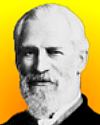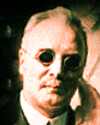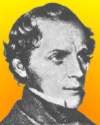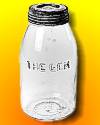| Do black holes come in size medium? Posted: 29 Nov 2013 06:11 PM PST Black holes can be petite, with masses only about 10 times that of our sun -- or monstrous, boasting the equivalent in mass up to 10 billion suns. Do black holes also come in size medium? NASA's Nuclear Spectroscopic Telescope Array, or NuSTAR, is busy scrutinizing a class of black holes that may fall into the proposed medium-sized category.  |
| Programe for parents of preschoolers getting results Posted: 29 Nov 2013 07:23 AM PST The results indicated that completion of the HOPE-20 program generated significant improvement in children's mastery of preschool concepts and language skills, reduced the children's behavior problems, lowered the stress of their parents, and fostered the parents' sense of competence.  |
| Protien Cyclin D1 governs microRNA processing in breast cancer Posted: 29 Nov 2013 07:19 AM PST A protein that helps push a replicating cell through the cell cycle also mediates the processing and generation of mature microRNA, according to new research.  |
| Controversy over use of Roman ingots to investigate dark matter, neutrinos Posted: 29 Nov 2013 07:19 AM PST The properties of lead bricks recovered from ancient shipwrecks are ideal for experiments in particle physics. Scientists have begun to use them, but archaeologists have raised alarm about the destruction and trading of cultural heritage that lies behind this.  |
| Elucidating heavy precipitation events Posted: 29 Nov 2013 07:19 AM PST It is difficult to forecast heavy precipitation events accurately and reliably. The quality of these forecasts is affected by two processes whose relative importance has now been quantified. The French researchers have shown that these processes should be taken into account in low wind speed events. Their findings should help forecast these events, which repeatedly cause significant damage.  |
| Mother-to-child HIV transmission in Gipuzkoa reduced significantly over last 25 years Posted: 29 Nov 2013 07:19 AM PST The evolution that took place between 1984 and 2011 in paediatric HIV infection in Gipuzkoa has been studied. The development of methods to diagnose the disease coupled with increasingly more effective treatments have made it possible to reduce mother-to-child transmission (vertical transmission) from 23.9% to 2.4%, thus virtually eradicating infection in children.  |
| The more the better: Polyandry in salamanders Posted: 29 Nov 2013 07:18 AM PST New research shows the impact of polyandry on reproductive success in fire salamanders.  |
| Enhancing efficiency of complex computations Posted: 29 Nov 2013 07:18 AM PST Planning a trip from Berlin to Hamburg, simulating air flows around a new passenger airplane, or friendships on Facebook – many computer applications model relationships between objects by graphs (networks) in the sense of discrete mathematics. An important method to manage complex computations on steadily growing networks is graph partitioning. Computer scientists have now released the Karlsruhe High Quality Partitioner (KaHIP). The solutions produced by this tool presently are the best worldwide.  |
| Mitochondria separate their waste Posted: 29 Nov 2013 07:18 AM PST Cellular power plants collect and break down damaged molecules in order to protect themselves from harmful substances, research shows. Up to now, it was unclear whether this housekeeping work involves sorting out defective proteins when they digest mitochondria. Researchers have now discovered that the proteins are sorted out during the constant fusion and fission of mitochondria.  |
| Telescope to track space junk using youth radio station Posted: 29 Nov 2013 07:18 AM PST A combination of pop songs, talkback radio and cutting-edge science has enabled Australian astronomers to identify a way to prevent catastrophic, multi-billion dollar space junk collisions, a new study has revealed.  |
| Electricity generated from weight of traffic and pedestrians Posted: 29 Nov 2013 07:17 AM PST New technology integrates a ramp-step (elaborated with polymeric material similar to the ones used in the manufacture of tires) that elevates to five centimeters above the level of the street. When receiving the impact of a vehicle, this ramp exerts pressure on a set of bellows below. The bellows contain air that is expelled at a certain pressure through a hose; later, this element travels to a tank where it is compressed and relaunched to an electricity generating turbine.  |
| Architects of nanoworld behind the screens Posted: 29 Nov 2013 07:17 AM PST New types of building blocks for electronics will be the future, that is clear. Molecules can already be given the functionality of a transistor. But compared to the huge complexity of current chips, with eight or nine 'highways' above each other, connecting all elements is still impossible. Silicon research and industry has shown an immense effort, and progress is being made.  |
| Food fight or exercise attack? Posted: 29 Nov 2013 07:16 AM PST Experts offer two ways to battle the holiday bulge.  |
| Bone grafting improvements with help of sea coral Posted: 28 Nov 2013 09:59 PM PST Sea coral could soon be used more extensively in bone grafting procedures thanks to new research that has refined the material's properties and made it more compatible with natural bone.  |
| Snapshots differentiate molecules from their mirror image Posted: 28 Nov 2013 11:13 AM PST Researchers are able to reveal the spatial structure of chiral molecules from work done to develop a method that takes a snapshot of chiral molecules, revealing their spatial atomic structure. The molecule's handedness, or chirality, can be directly derived from this information.  |





 Can you name this popular stove?
Can you name this popular stove? 




 If you enjoy this newsletter, the website, or wish to offer encouragement or ideas, please
If you enjoy this newsletter, the website, or wish to offer encouragement or ideas, please 